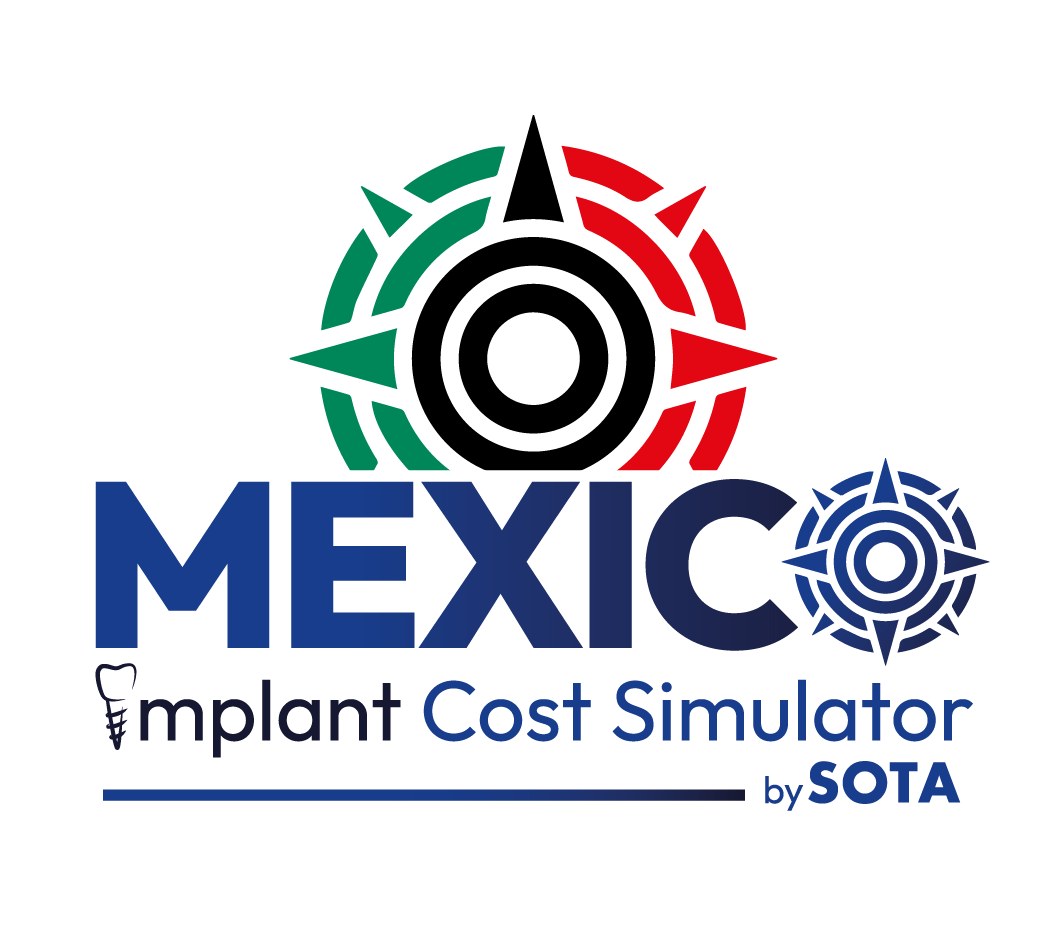Cost of
DENTAL
CROWNS
IN MEXICO

Try our All on 4 Smile Simulator
Know before you travel.
100% Free. Try it today!


WHAT ARE
DENTAL CROWNS?
Dental crowns are custom-made caps that cover damaged or decayed teeth to restore their shape, size, strength, and appearance1. They are cemented over the existing tooth structure2, fully encasing the visible portion of the tooth above the gum line. Crowns are an effective solution for protecting weakened teeth, supporting dental bridges, or improving the aesthetics of your smile.
BENEFITS OF
GETTING
dental crowns
• Protection: Shields weakened or cracked teeth from further damage.
• Restoration: Restores the function and appearance of damaged or decayed teeth7.
• Durability: Long-lasting solution with proper care6.
• Improved Aesthetics: Enhances the appearance of teeth, correcting discoloration, shape, or alignment issues.
• Support: Anchors dental bridges and covers dental implants.
• Confidence Boost: Improves self-esteem by restoring a healthy-looking smile.

TYPES OF
DENTAL CROWNS
Porcelain Crowns
• Aesthetics: Offer a natural look, matching the color and translucency of natural teeth.
• Biocompatibility: Metal-free, reducing the risk of allergic reactions or sensitivity.
• Usage: Ideal for front teeth due to their superior appearance.
Zirconia Crowns
• Strength: Extremely durable and resistant to wear and fracture4.
• Appearance: Provides a natural look with a translucent appearance similar to natural teeth.
• Biocompatibility: Hypoallergenic and gentle on surrounding tissues.
• Usage: Suitable for both front and back teeth, especially where strength is a priority.
Metal and Porcelain-Fused-to-Metal Crowns
• Metal Crowns: Made from alloys containing gold, palladium, or base metals like nickel or chromium.
• Durability: Highly resistant to wear and fracture.
• Appearance: Noticeable metal color, usually used for molars.
Porcelain-Fused-to-Metal (PFM) Crowns
• Aesthetics: Porcelain overlay provides a tooth-colored appearance.
• Strength: Metal base offers added strength5.
• Usage: Versatile for front and back teeth but may show a dark line at the gum line over time.
WHY CHOOSE MEXICO FOR DENTAL CROWNS?
Affordable Pricing
Save up to 60% compared to costs in the USA and Canada
Experienced Dentists
Access to highly trained professionals specializing in restorative dentistry.
Modern Facilities
Clinics equipped with advanced technology and adhering to international standards.
Quality Materials
Use of high-quality materials comparable to those used in the USA and Canada.
Convenient Travel
Proximity to North America with various transportation options.
Comprehensive Care
Personalized treatment plans and assistance with travel arrangements.


Try our online Cost & Smile Simulator from the comfort of your own home.
100% Free. 100% Confidential.
COST OF DENTAL CROWNS IN
MEXICO - USA - CANADA
| Mexico | USA | Canada | |
|---|---|---|---|
| Porcelain Crown | $450 USD | $1,200 USD | $1,300 USD |
| Zirconia Crown | $550 USD | $1,500 USD | $1,600 USD |
| Porcelain-Fused-to-Metal Crown | $375 USD | $1,000 USD | $1,100 USD |
| Metal Crown | $325 USD | $900 USD | $1,000 USD |
COMPARE MATERIALS
The cost8 of dental crowns in Mexico varies based on the material and the clinic. Average prices include:
• Porcelain Crowns (Per Tooth): $400 USD to $500 USD
• Zirconia Crowns (Per Tooth): $500 USD to $600 USD
• Porcelain-Fused-to-Metal Crowns (Per Tooth): $350 USD to $400 USD
• Metal Crowns (Per Tooth): $300 USD to $350 USD
Note: Prices are estimates and may vary depending on individual needs and specific clinic fees.
THE DENTAL CROWN
PROCEDURE EXPLAINED

- Dental Examination: Comprehensive evaluation of the affected tooth.
- Imaging: X-rays to assess the tooth's root and surrounding bone.
- Treatment Planning: Discussion of crown material options and creation of a customized plan9.
- Anesthesia: Local anesthesia to numb the tooth and surrounding tissue.
- Reshaping the Tooth: Removal of a portion of the tooth structure to accommodate the crown.
- For severely decayed or damaged teeth, a buildup may be required to provide enough structure for the crown.
- Digital Scans or Impressions: Accurate models of the prepared tooth and opposing teeth are created.
- Shade Matching: Selection of the crown color to match adjacent teeth for a natural appearance10.
- Protection: A temporary crown is placed to protect the prepared tooth while the permanent crown is being fabricated11.
- Duration: Typically worn for 1-2 weeks.
- Laboratory Work: The impressions are sent to a dental lab where the crown is crafted.
- Material Selection: Based on the patient's choice (porcelain, zirconia, etc.).
- Removal of Temporary Crown: Temporary crown is removed carefully.
- Fitting and Adjustments: The permanent crown is placed on the tooth, and adjustments are made for a proper fit and bite alignment.
- Cementation: Once satisfied, the crown is permanently cemented onto the tooth.
- Final Checks: Ensuring comfort and proper function.
- Oral Hygiene Instructions: Guidance on brushing, flossing, and maintaining the crown.
- Follow-Up Visits: Regular dental check-ups to monitor the crown and overall oral health.



FREQUENTLY ASKED QUESTIONS
How long do dental crowns last?
With proper care, dental crowns can last between 10 to 15 years or longer. Factors affecting longevity include oral hygiene practices, biting habits, and the material of the crown12.
Is getting a dental crown painful?
The procedure is typically painless due to the use of local anesthesia. Some patients may experience mild sensitivity after the procedure, which usually subsides within a few days.
Can a crowned tooth get a cavity?
While the crown itself cannot decay, the tooth underneath can develop cavities at the margin where the crown meets the natural tooth. Good oral hygiene is essential to prevent decay.
What is the best material for a dental crown?
The best material depends on the location of the tooth, aesthetic preferences, and budget. Porcelain and zirconia are popular for their natural appearance and strength3.
How do I care for my dental crown?
Maintain regular brushing and flossing, avoid biting hard objects, and attend regular dental check-ups. Use a non-abrasive toothpaste and consider a nightguard if you grind your teeth.
Will my insurance cover dental crowns in Mexico?
Some insurance plans may offer partial reimbursement for out-of-country dental treatments. It’s important to consult your insurance provider for specific coverage details.
TIPS FOR TRAVELING TO MEXICO
FOR DENTAL WORK

• Research Reputable Clinics: Look for clinics with positive patient reviews, certifications, and experienced dentists.
• Plan Your Schedule: Allow time for initial consultation, crown preparation, and placement of the permanent crown.
• Consultation: Some clinics offer virtual consultations to discuss your treatment plan beforehand.
• Travel Documents: Ensure your passport is valid and check for any visa requirements.
• Accommodation: Book lodging near the clinic for convenience; some clinics may offer accommodation packages.
• Budgeting: Factor in travel expenses, accommodations, and any potential currency exchange rates.
• Health Considerations: Inform the clinic of any medical conditions or allergies.

CONCLUSION
Dental crowns in Mexico provide an affordable and high-quality solution for restoring damaged or decayed teeth. With access to experienced dental professionals and modern facilities, patients can achieve excellent results at a fraction of the cost compared to the USA and Canada. By choosing to get dental crowns in SOTA Dental Mexico, you can enhance your smile’s function and appearance while enjoying the rich culture and hospitality that Mexico has to offer. Careful planning and selecting a reputable clinic will ensure a successful and satisfying dental experience.
References
- WebMD: Dental Crowns: Purpose, Procedure, Complications, Care
- How Products Are Made: How dental crown is made – material, manufacture, making, used, processing, components, structure, steps
- Journal of Dentistry: Dentist material selection for single-unit crowns: Findings from the National Dental Practice-Based Research Network – ScienceDirect
- Animated-Teeth.com: Types of crowns: Porcelain-fused-to-metal, Ceramic, Metal/Gold
- PubMed: Combination Gold-Faced Platinum Crown with Porcelain Cusp and Face
- PubMed: Summary review of the survival of single crowns – PubMed
- ADA: Treatment recommendations for single-unit crowns – The Journal of the American Dental Association
- CostHelper: Cost of a Dental Crown
- Journal of Prosthetic Dentistry: Retrospective clinical study of monolithic zirconia crowns fabricated with a straightforward completely digital workflow
- ScienceDirect: Optical effects of different colors of artificial gingiva on ceramic crowns
- JOMS: Chairside Preparation of Provisional Restorations – Journal of Oral and Maxillofacial Surgery
- Healthline: How Long Does a Crown Last? Average Lifespan of a Dental Crown

